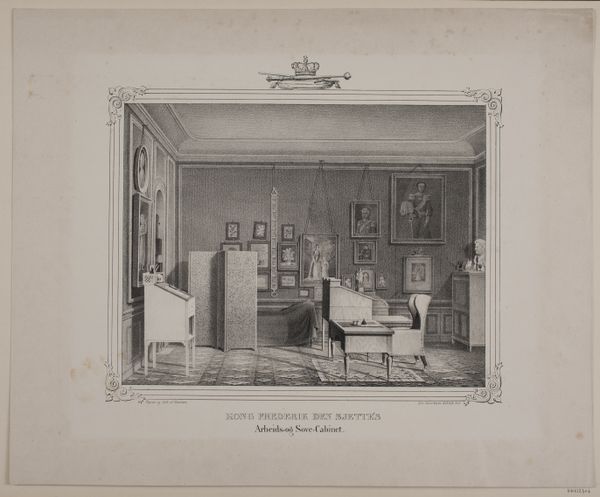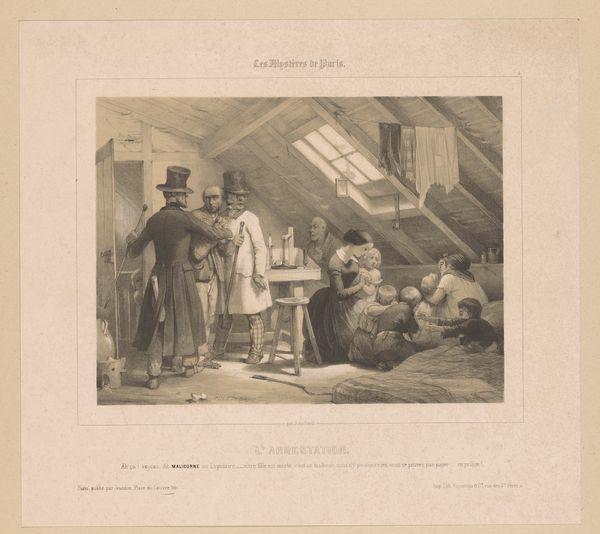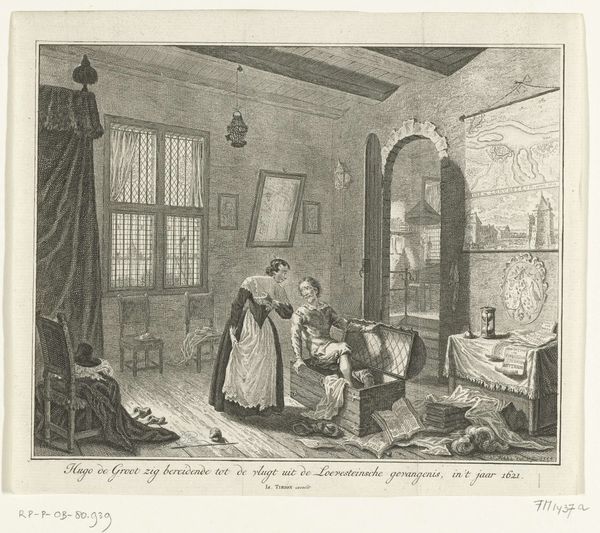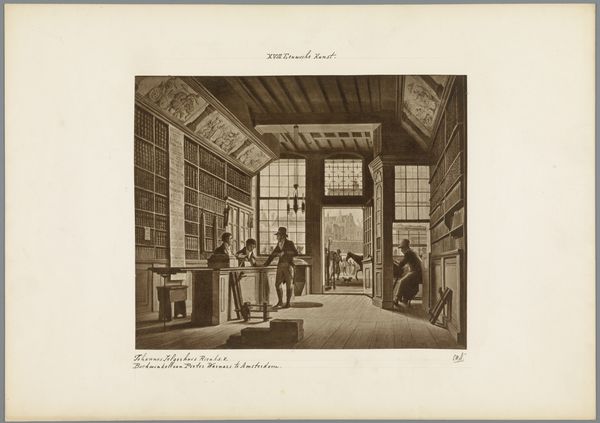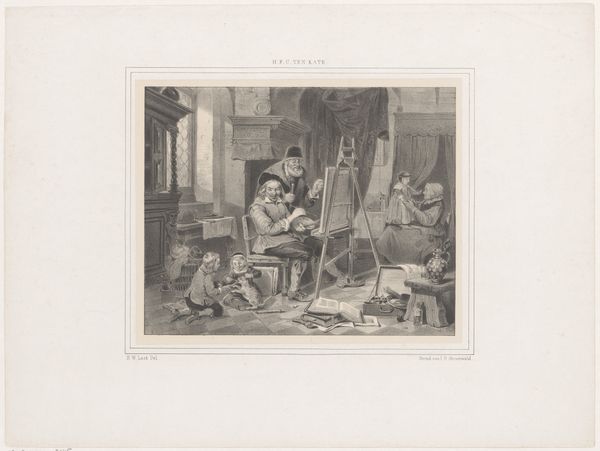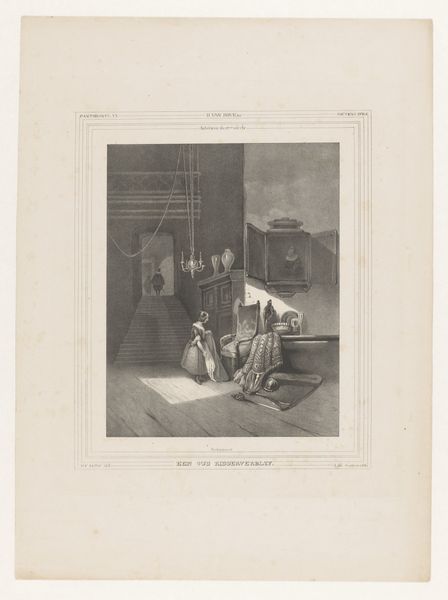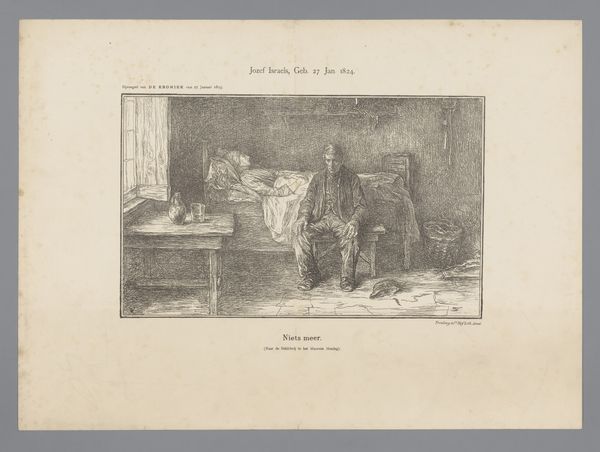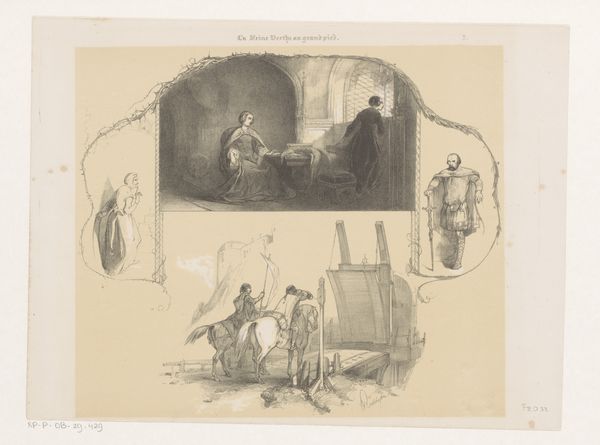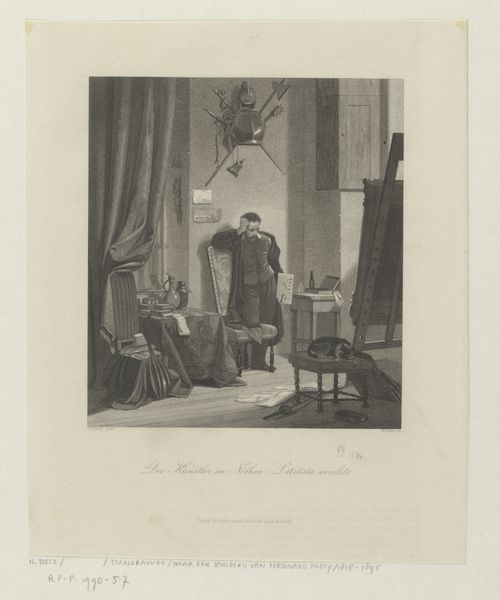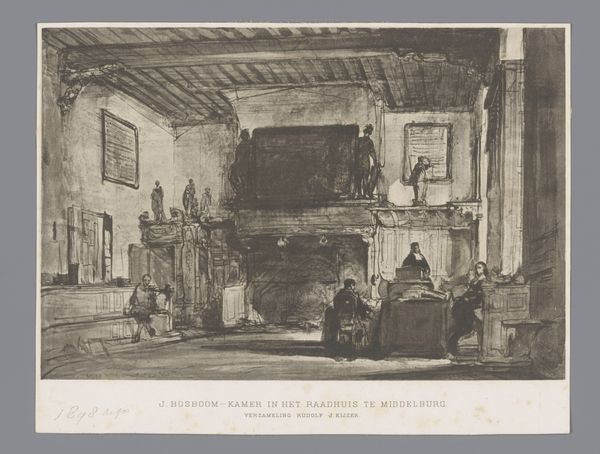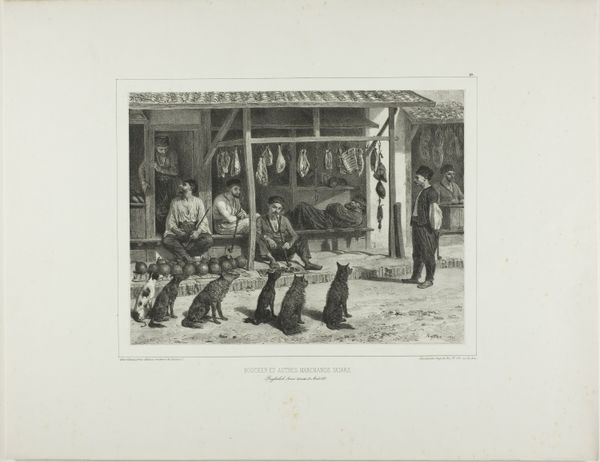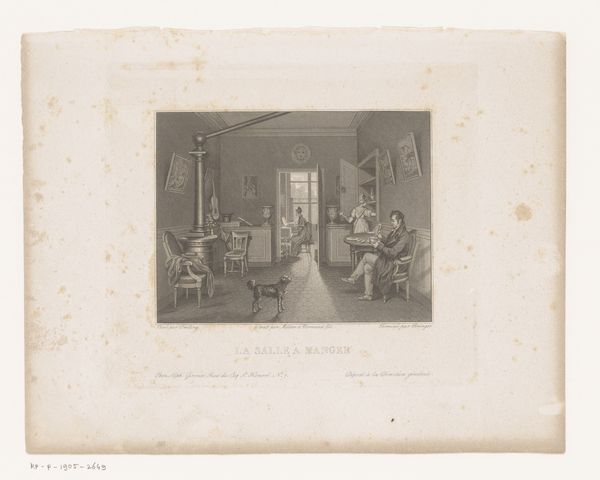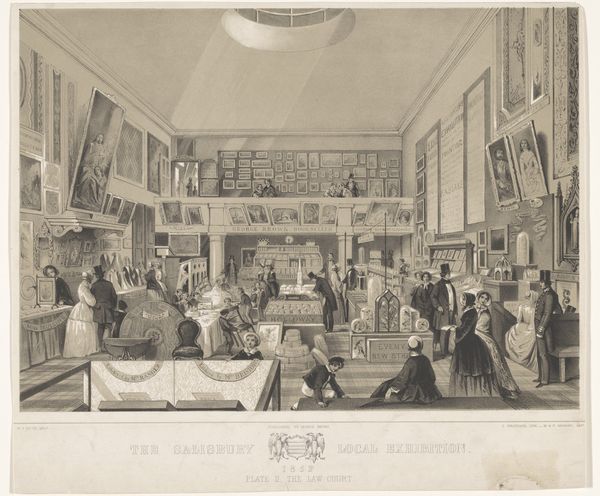
drawing, lithograph, print, paper
#
drawing
#
lithograph
# print
#
paper
#
romanticism
#
orientalism
#
genre-painting
Dimensions: 204 × 364 mm (image); 204 × 364 mm (primary support); 308 × 456 mm (secondary support)
Copyright: Public Domain
Curator: This is "Tartar Bath, Resting Room" by Auguste Raffet, a lithograph created in 1840. The piece is currently part of the Art Institute of Chicago's collection. Editor: It feels…staged, somehow. The sharp delineation between light and shadow gives it a very artificial air, despite the seemingly candid subject matter. Curator: The interplay of light and shadow certainly emphasizes the spatial complexity Raffet achieves with the print medium. Observe how the linear perspective, defined by the architectural elements, directs our gaze into the depth of the composition. Editor: And towards that intriguing scene in the far right corner - are those figures observing the scene as well, or simply unaware? There's this layer of voyeurism or performance. Given the vogue for Orientalism at the time, one must wonder what kind of message is being delivered. The cultural biases and colonial attitudes towards the 'Orient' as exotic and available should come into play here. Curator: Precisely. While we might approach Raffet’s choice of subject matter and style through an ideological critique, focusing instead on the internal coherence of the work allows one to appreciate his deployment of line, texture and tonal contrasts. Consider the stippling technique used to convey the subtle gradations of light on the walls, which gives a distinct luminosity and depth to the scene. Editor: Right, I suppose understanding the marketplace context gives a new dimension. It's also difficult to separate our own current values from how such a scene may have played out at the time for Raffet's European audience. This exotic “resting room” could simultaneously be inviting yet somehow…untouchable, both near and far, physically and culturally. Curator: I’d also direct the audience’s attention to how the orthogonals of the architecture work in concert with the figure placement, forming intersecting lines. Note also how the round pool mirrors the circular shapes in the background, creating subtle visual echoes and formal relationships within the composition. Editor: Ultimately, seeing art involves navigating these layers of personal context and how institutions, social, political powers also come into play. Understanding that interaction—the interplay between representation and reality, if you will—helps unpack its broader implications. Curator: Yes, and seeing, I feel, lies first with appreciating the skillful composition and rendering, without which no other readings could emerge.
Comments
No comments
Be the first to comment and join the conversation on the ultimate creative platform.
